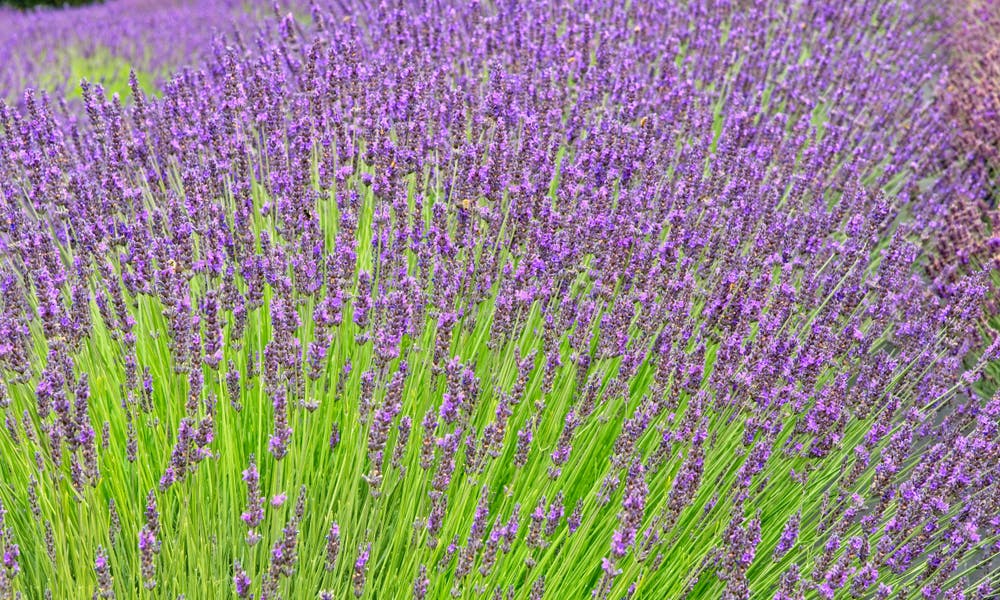There are very few flowers as famous as the lavender flower. It has been used for centuries in herbal remedies, essential oils, cuisine, and cosmetics. Its dark, vivid colors have drawn people to use it ornamentally in gardens and indoors. Its ability to induce a sense of calm, coaxing adults and children alike into a deep restful sleep is one of its most well-known properties, and society continues to find more and more useful ways this flower can help us live better lives. If you’re looking to discover all the ways this amazing flower has wormed its way into our society, look no further.
Keep reading to find out the:
- Origins of the Lavender Flower
- Lavender details
- Use in Cuisine
- Medicinal Properties
- Essential oils
- Cultural Symbolism
Origins of the Lavender Flower
The Lavandula, or the lavender flower as we have come to call it, is a flowering plant part of the Lamiaceae family, which is well known for producing the mint and sage plants. This wonderful flower is a temperate plant and can be found growing across Europe, the Mediterranean and down to the northern and eastern parts of Africa, into parts of southwestern Asia and southeastern India. At least a few thousand years old, having been written about in Roman times, this flower’s name is thought to derive from the French word lavandre, which itself stems from the Latin lavare, which means ‘to wash. There are some who think that the name may derive from another Latin word, livere, which means ‘blueish.
Lavender Details
With over 47 species within its genus, the lavender flower is a very diverse plant. Some species are annual, while others are more short-lived perennials. There are small shrubs, subshrubs as well as herbaceous plants. Most of the flowers grow in whorls, holding onto spike-like stems that float among the foliage. Many of the flowers have small hairs, called indumentum, which are responsible for producing the very popular essential oils we all love. There is a broad spectrum of leaf shape, with pinnate, toothed or multiple pinnate leaves existing. The corolla and calyx are generally tubular, with five lobes. The shrubs are generally only 1-2 feet tall. Most of the wild varieties have deep, vivid colors such as lilac, violet or blue, with a few rare being blackish-purple or yellow.
Use in Cuisine
In most culinary cuisine, the English Lavender is used. It has a sweet aroma with hints of citrus or lemon. The buds of the flower are commonly used to enhance the scent and taste of other things such as sugar, which is marketed as lavender sugar in some instances. Champagne, stews, teas, and other sweets are made from the buds as well. The greens of the plant can be used to flavor meat and vegetables and are generally combined with rosemary, giving a very floral aroma and taste to any dish. Teas are sometimes made with the greens as well, since it has a milder taste. The lavender flower produces large quantities of nectar, which when turned into honey by bees is considered very delicious. known by the name monofloral honey, it is manufactured mainly in the Mediterranean.
Medicinal Properties
In traditional herbalism, the lavender flower has been used for generations to deal with symptoms of insomnia and anxiety as well as for the treatment of cardiovascular and intestinal issues. Although it been marketed quite often in supplements, as of now most of the research done on the plant has been of poor quality, with dozens of clinical trials leading to very little proof of efficacy. Regardless, some places in the world such as Germany have approved it in some supplements for anxiety-related disorders.
Essential Oils
Considered generally safe by the USDA, with only some small percentage of people having allergic reactions to lavender products, the oils the lavender flower produces have become famous worldwide. The sweeter English lavender is commonly used in balms, salves, perfumes, cosmetics, and topical products. The Dutch lavender, with its stronger aroma, is generally used more in products such as perfumes as well as in essential oil vaporizers. It is thought to be of use to soothe and relax the nervous system, calming the mind and body; due to this it is very commonly used in spas and as an enhancer of massage oils.
Cultural Symbolism
The dark colors of the lavender flower are thought to represent royalty, elegance, and refinement. It has come to symbolize the aspects of purity, silence, devotion, grace, serenity, and calm in many places.
How to Grow Your Own Lavender
A temperate plant, the lavender flower requires lots of sunlight. Ideally planted in early autumn or spring, making sure to find a well-drained spot that contains a dry, thick soil is best. Plant each flower at least a few feet apart to allow for growth. It does not require much watering except in the first few weeks of planting, or unless it is a potted plant. Applying fertilizer is not necessary for good growth so save your money. Very little pruning is required either, with a gentle cutting being done in the months of February or March. Once the plant has flowered you can cut the stems and keep them for years after drying them out.
The Soothing Lavender Flower
Many flowers have made a home within the hearts and minds of humans, yet none so much as the soothing lavender flower. It is nature’s way of saying relax, take it easy and let your problems fall away. Whether putting a few drops into your bath to soak away the day or hiding a few dried lavender petals in your pillowcase or clothes drawer, this flower knows how to make you feel good. Getting some lavender into your life can help you be a better version of yourself, bringing all the Zen you need in one small package.
